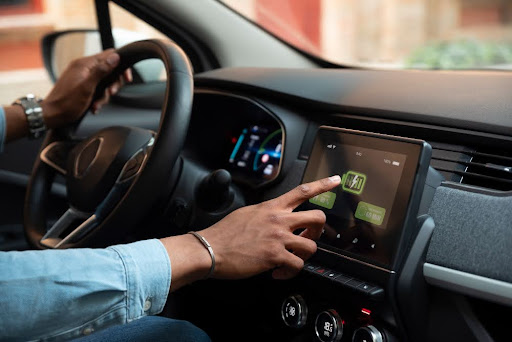Beyond Boundaries: Remote Vehicle Performance Tuning Explained

In the ever-evolving landscape of automotive technology, the quest for optimizing vehicle performance knows no bounds.
As enthusiasts and professionals alike seek to extract every ounce of power and efficiency from their machines, the methods of achieving such feats continue to evolve.
One such advancement that has revolutionized the realm of automotive tuning is the concept of remote vehicle performance tuning.
Gone are the days when a tuner had to be physically present with the vehicle to make adjustments; now, with the advent of remote tuning technologies, the boundaries of what is possible have expanded exponentially.
The Evolution of Vehicle Tuning
Vehicle tuning has long been a cornerstone of automotive enthusiast culture. Whether it’s tweaking engine parameters for more horsepower, adjusting suspension settings for better handling, or fine-tuning transmission behavior for improved performance, the goal has always been the same: to push the limits of what a vehicle can do.
Traditionally, this process involved physically accessing the vehicle’s onboard computer systems and making adjustments using specialized tools and software.
While effective, this approach had its limitations. Tuners needed to be physically present with the vehicle, which often meant scheduling appointments and potentially traveling long distances.
Additionally, the process could be time-consuming and labor-intensive, especially for complex tuning tasks.
Enter Remote Vehicle Performance Tuning
Remote vehicle performance tuning represents a paradigm shift in the world of automotive tuning.
Instead of requiring the tuner to be in the same physical location as the vehicle, remote tuning allows adjustments to be made electronically, often from thousands of miles away.
This is made possible by leveraging the power of the internet and sophisticated tuning software.
At the heart of remote tuning is the ability to access the vehicle’s onboard computer systems remotely.
This is typically achieved using a device known as a “flash tuner” or “programmer,” which connects to the vehicle’s diagnostic port.
Once connected, the tuner can communicate with the vehicle’s engine control unit (ECU) or electronic control module (ECM) and make real-time adjustments to a wide range of parameters.
How Remote Tuning Works
The process of remote vehicle performance tuning can vary depending on the specific software and hardware used, but the basic steps are generally the same:
- Initial Setup: The vehicle owner or tuner installs the necessary hardware and software onto the vehicle and connects it to the internet.
- Data Logging: The tuner instructs the vehicle owner to perform a series of data logging runs, during which various engine parameters are recorded.
- Analysis: The tuner reviews the logged data to identify areas for improvement and develop a tuning strategy.
- Adjustments: Using remote tuning software, the tuner makes adjustments to the vehicle’s ECU or ECM settings. This can include changes to fuel and ignition timing, boost levels (for turbocharged engines), throttle response, and more.
- Testing: The vehicle owner performs additional data logging runs to evaluate the effectiveness of the tuning adjustments.
- Fine-Tuning: Based on the results of the testing, the tuner may make further adjustments to optimize performance.
- Finalization: Once the desired level of performance is achieved, the tuning process is finalized, and the vehicle is ready to hit the road.
Advantages of Remote Tuning
Remote vehicle performance tuning offers a number of significant advantages over traditional tuning methods:
- Convenience: Perhaps the most obvious benefit of remote tuning is the convenience it offers. Tuning sessions can be conducted from anywhere with an internet connection, eliminating the need for in-person appointments and allowing tuners to work with clients around the world.
- Time Savings: Remote tuning can be completed much more quickly than traditional tuning methods.
Without the need for travel or in-person meetings, tuning sessions can often be scheduled and completed in a fraction of the time.
- Cost-Effectiveness: By eliminating travel expenses and reducing the time required for tuning sessions, remote tuning can be more cost-effective for both tuners and vehicle owners.
- Real-Time Adjustments: Remote tuning software allows for real-time adjustments to be made to the vehicle’s ECU or ECM settings, allowing for more precise tuning and immediate feedback on performance changes.
- Accessibility: Remote tuning makes high-quality tuning services more accessible to enthusiasts and professionals alike.
No longer limited by geographic location, vehicle owners can connect with experienced tuners from anywhere in the world.
The Future of Remote Tuning
As automotive technology continues to advance, the capabilities of remote vehicle performance tuning are likely to expand even further.
Advancements in artificial intelligence, machine learning, and data analytics are already being leveraged to develop more sophisticated tuning algorithms and techniques.
Additionally, improvements in internet connectivity and cybersecurity will help to make remote tuning even more reliable and secure.
Furthermore, as electric and hybrid vehicles become increasingly common, the demand for remote tuning services for these types of vehicles is likely to grow as well.
Tuning electric powertrains presents unique challenges and opportunities, and remote tuning technologies will play a crucial role in maximizing the performance and efficiency of these vehicles.
Conclusion
In conclusion, remote vehicle performance tuning represents a significant advancement in the field of automotive tuning, pushing the boundaries of what is possible and opening up new opportunities for enthusiasts and professionals alike.
With its convenience, efficiency, and accessibility, remote tuning is poised to continue revolutionizing the way we optimize vehicle performance for years to come.



